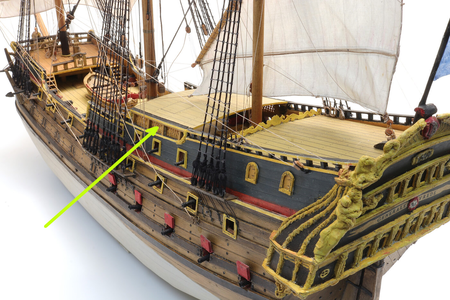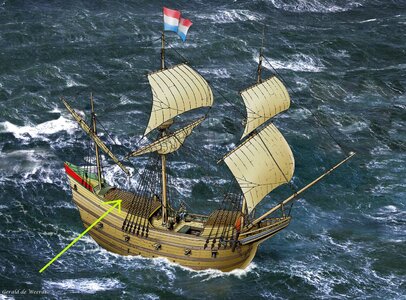Usually my models do not take more than a few months to be completed, but this one is another story. I started making the plans in the 80s of the last century, when I found a complete description of three charters of 'retour' ships in the book 'Beschryvinge van de Oostindische Compagnie' (Description of the Eastindian Company) by P. van Dam (1701). In 1697 the Heeren XVII (directors) of the VOC established the shapes of their ships to be built in a Resolution with measurements of 9 station lines, all together 54 locations which were enough to be processed into a lines plan.
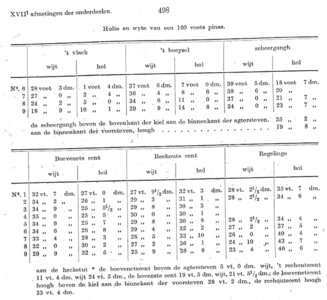
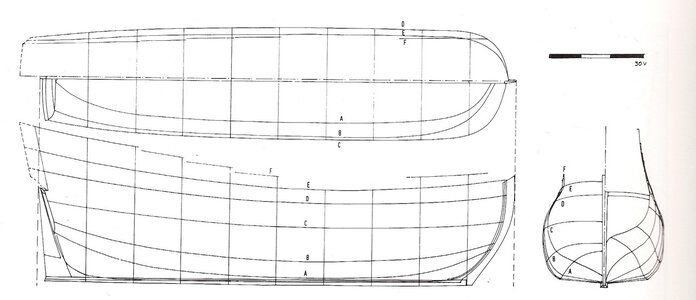
In 2016 I started a paper model just to see how the shape worked out in 1/77 scale. After a few false starts I ended up with a hull which was entirely documented, a rare thing in Dutch maritime history. Most models of those days are copies of original models or the products of simply bare guesswork. I showed my methods of building here several times, so I just post a few pics to give an image of the build.
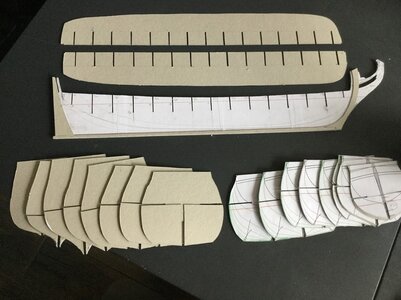
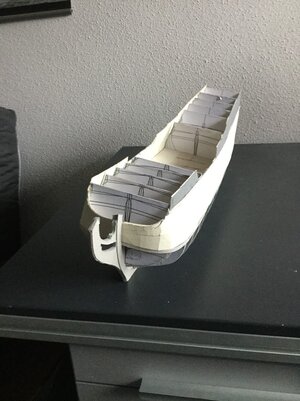
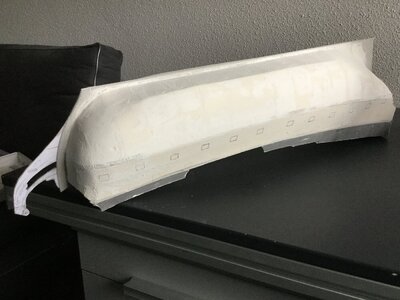
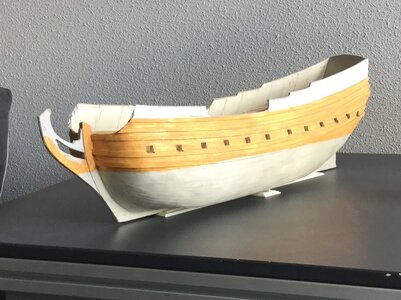
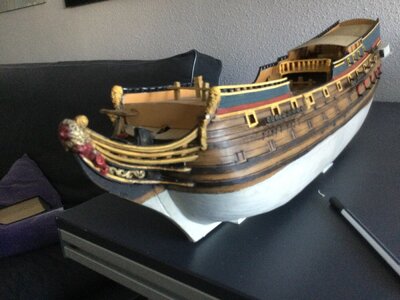
I was satisfied with the model, but decided not to rig it, because it was 70 centimeters long already (rigged it appeared to measure over 80) and I think that is too big for a private home. My wife's tolerance has its borders.
Lately a museum showed interest in an Eastindiaman and I decided to finish it after all. So in November last year I started working. There was a huge problem when it came to the details: there was no contemporary model nor paintings or prints of such a vessel of around 1700. The Eastindia Company changed the looks of their ships since the oldest model (Prins Willem 1651) and the differences were massive, judged by the next retourship model: Valkenisse (1717). The high aft end of ships had become much lower, the fashion for carvings changed from multi-colored into just yellow and the function of the vessels changed too: more and more the ships were equipped with accomodation for passengers, for which a sun roof was made over the quarterdeck where the passengers resided when they left their quarters there. Also a second row of windows was placed in the stern, causing an entirely different composition of the 'taffrail'. In combination with the lower aft section of the ship, the stern slowly changed into a horse shoe shape as can be seen on the Valkenisse. Closest to what I was looking for was the stern of the William Rex of 1697, but she was a warship and therefore much more decorated than a trader like my model.
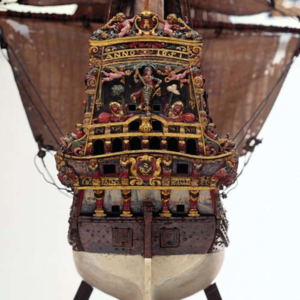
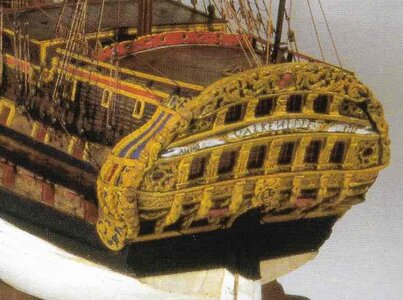
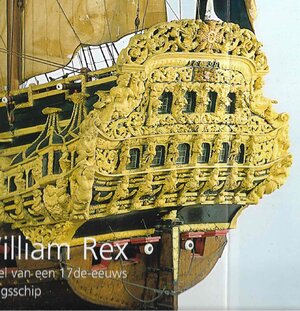
I started looking for a name for my ship, which I found in the archives: the first 160 footer built in Amsterdam after the Resolution had been effected was 'Generale Vrede' of 1699. The name referred to the Peace of Ryswick, which ended the Nine-years War (1688-1697) between France and an alliance of many other European counties. It corrected Louis XIV's efforts to enlarge his country at the costs of its neighbours. The VOC was very happy with this treaty, because it had lost many ships to the French privateers who were raiding the Channel during that time. Of course there was no picture of this particular ship, so I had to improvize. I did my best with a banner with the name, the Greek goddess of peace Eirene with a child on her arm and some peace pidgeons. The shape of the stern is not completely horse shoe-like yet, still an bit like William Rex, but it starts tending into that direction.
Furthermore the build was rather uncomplicated. As usual my son made the pictures. I hope you like both the model and the pictures.
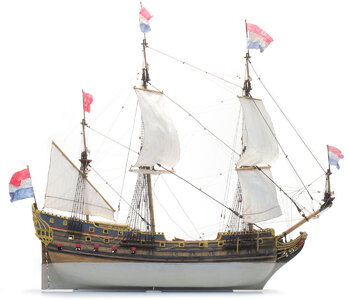
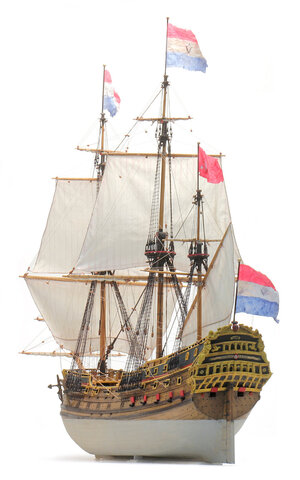
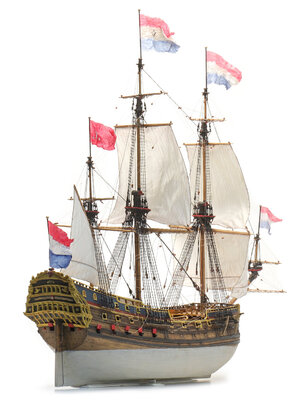
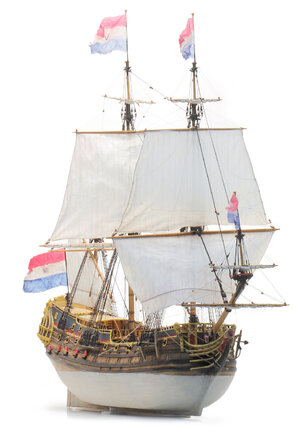
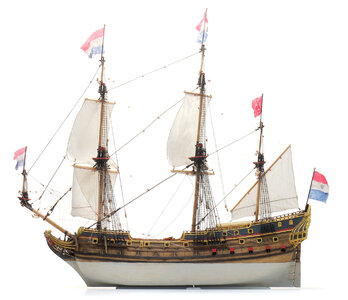
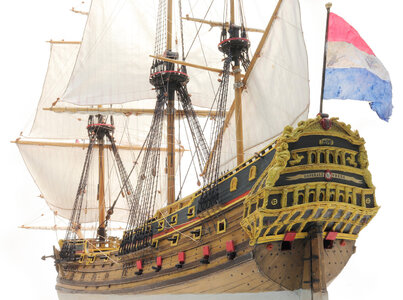
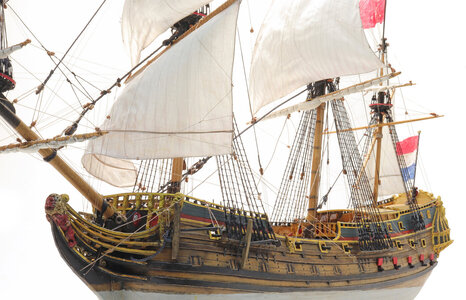
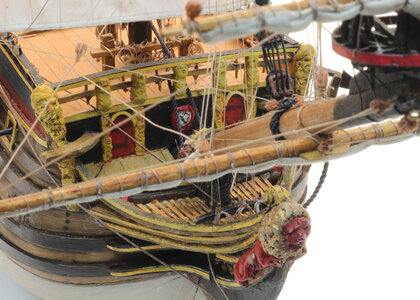
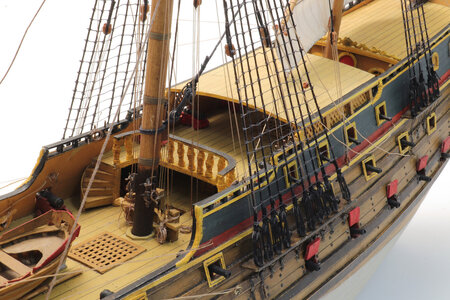
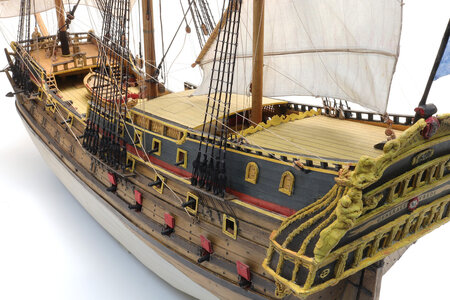
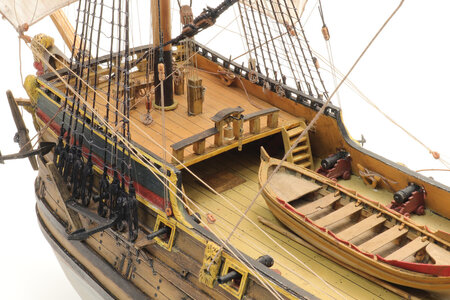
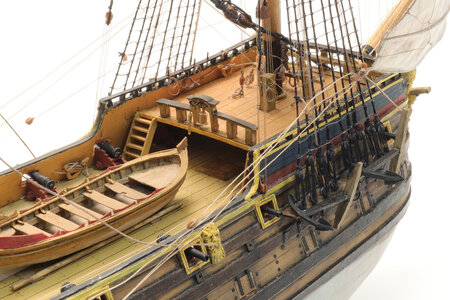
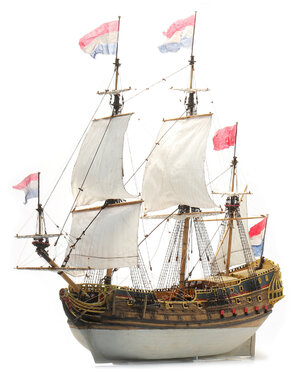


In 2016 I started a paper model just to see how the shape worked out in 1/77 scale. After a few false starts I ended up with a hull which was entirely documented, a rare thing in Dutch maritime history. Most models of those days are copies of original models or the products of simply bare guesswork. I showed my methods of building here several times, so I just post a few pics to give an image of the build.





I was satisfied with the model, but decided not to rig it, because it was 70 centimeters long already (rigged it appeared to measure over 80) and I think that is too big for a private home. My wife's tolerance has its borders.
Lately a museum showed interest in an Eastindiaman and I decided to finish it after all. So in November last year I started working. There was a huge problem when it came to the details: there was no contemporary model nor paintings or prints of such a vessel of around 1700. The Eastindia Company changed the looks of their ships since the oldest model (Prins Willem 1651) and the differences were massive, judged by the next retourship model: Valkenisse (1717). The high aft end of ships had become much lower, the fashion for carvings changed from multi-colored into just yellow and the function of the vessels changed too: more and more the ships were equipped with accomodation for passengers, for which a sun roof was made over the quarterdeck where the passengers resided when they left their quarters there. Also a second row of windows was placed in the stern, causing an entirely different composition of the 'taffrail'. In combination with the lower aft section of the ship, the stern slowly changed into a horse shoe shape as can be seen on the Valkenisse. Closest to what I was looking for was the stern of the William Rex of 1697, but she was a warship and therefore much more decorated than a trader like my model.



I started looking for a name for my ship, which I found in the archives: the first 160 footer built in Amsterdam after the Resolution had been effected was 'Generale Vrede' of 1699. The name referred to the Peace of Ryswick, which ended the Nine-years War (1688-1697) between France and an alliance of many other European counties. It corrected Louis XIV's efforts to enlarge his country at the costs of its neighbours. The VOC was very happy with this treaty, because it had lost many ships to the French privateers who were raiding the Channel during that time. Of course there was no picture of this particular ship, so I had to improvize. I did my best with a banner with the name, the Greek goddess of peace Eirene with a child on her arm and some peace pidgeons. The shape of the stern is not completely horse shoe-like yet, still an bit like William Rex, but it starts tending into that direction.
Furthermore the build was rather uncomplicated. As usual my son made the pictures. I hope you like both the model and the pictures.


















